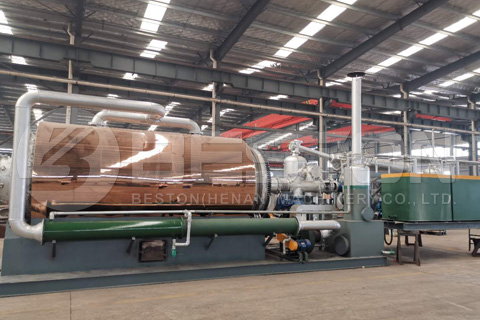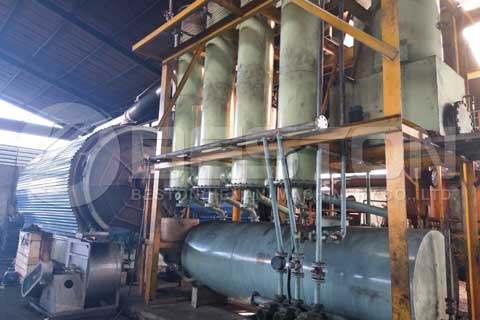Did you know that carbonization is one of the best ways of managing biowaste? Waste management, especially for biomass has made recycling and reusing of useful byproducts possible. A Pyrolysis machine, or biomass carbonization machine, in particular, uses wood, coconut shells, rice husks, and many others to yield useful byproducts like charcoal. But how does it work(Maquinaria Beston Henan)?
Process of Wood Transformation Into Charcoal in a Pyrolysis Machine
To understand how the machine works, let’s consider wood as the raw material. Wood is made up of cellulose, lignin, and water, amongst a few other components that are closely bonded together. Water is usually retained on the lignin or cellulose structure. When wood is freshly cut, it normally contains over 40% water in its weight. This type of wood is called unseasoned wood.

When dried, it loses about 70% of its water, such that only 12% of water remains. Aire dried wood is also known as seasoned wood. This process is very crucial. This is because all the water in wood must be vaporized before carbonization. This means that without air drying, the pyrolysis machine would have to get rid of over 40% of water, yet the process requires numerous amounts of energy(planta pirolisis llantas).
The residual water in the carbonized wood is normally evaporated in a kiln or pit. The energy is usually obtained from the wood, meaning the more you use it for fuel, the lesser the byproduct. In simple words, if you’d like to save on fuel and have a more economical carbonization process, use seasoned wood, chaff, coconut shells, and so on.
That said, the first step in carbonization in the kiln is to dry the wood to 0% moisture content at 100°C or below. From here, the oven’s dry wood temperature is then raised to around 280°C. These steps are powered by the partial burning of some of the wood charged to the kiln or pit, which is an energy-absorbing reaction. When the dry wood is heated to roughly 280°C, it begins to

spontaneously decompose. As such, it yields the following products and by-products:
• Charcoal
• Water vapor
• Methanol
• Acetic acid(trituradoras de llantas)
• Other complex compounds, primarily in the form of tars
• Non-condensible gas, primarily hydrogen, carbon monoxide, and carbon dioxide.
Note that air is usually allowed into the kiln for some wood to be burned hence the presence of nitrogen in the gas. Above a temperature of 280°C, the spontaneous breakdown or carbonization of the wood releases energy. This spontaneous carbonization or disintegration process continues until only the carbonized residue known as charcoal remains.
The process will come to a halt until further external heat is given, at which point the temperature will reach a maximum of around 400°C. This charcoal, on the other hand, will still include a significant quantity of tarry residue, as well as the ash from the original wood.
Looking for a Pyrolysis Machine?
If you would like to convert wood, sawdust, coconut shells, wood, rice husks, vines from rural plants, and other biomass products into usable products, contact us. We are gurus in highly efficient pyrolysis machines (https://www.bestoneco.com/planta-de-pirolisis/)and are a renowned company when it comes to customer satisfaction. Call us for the best deals!